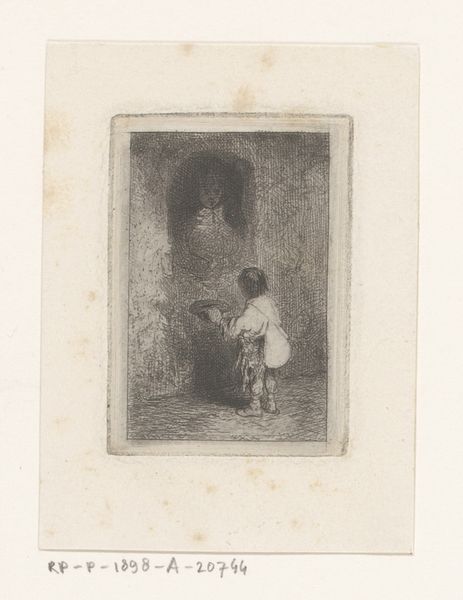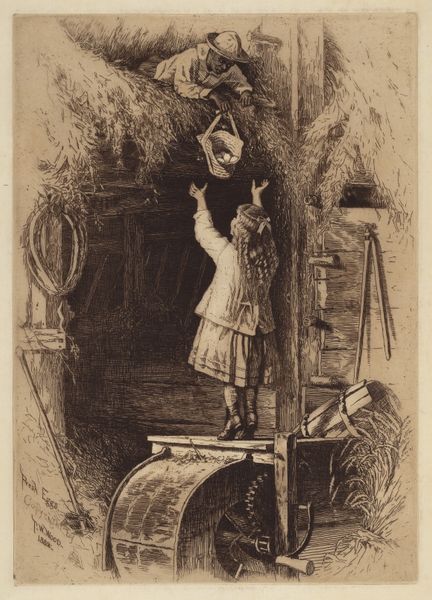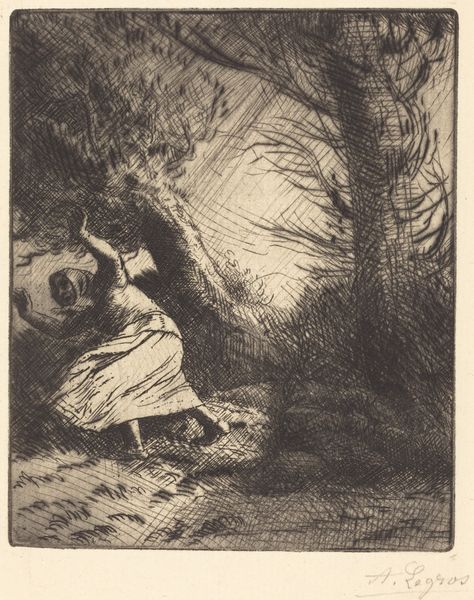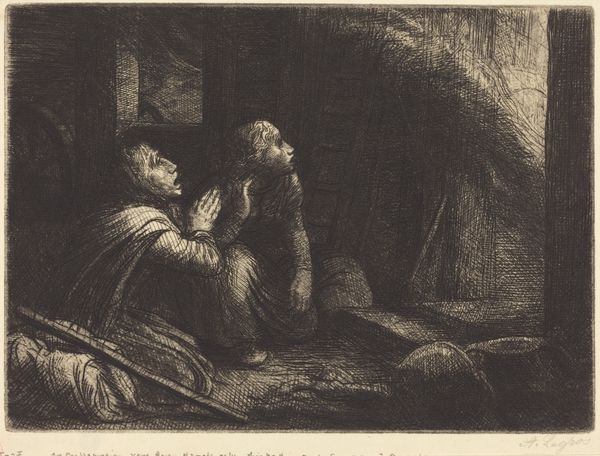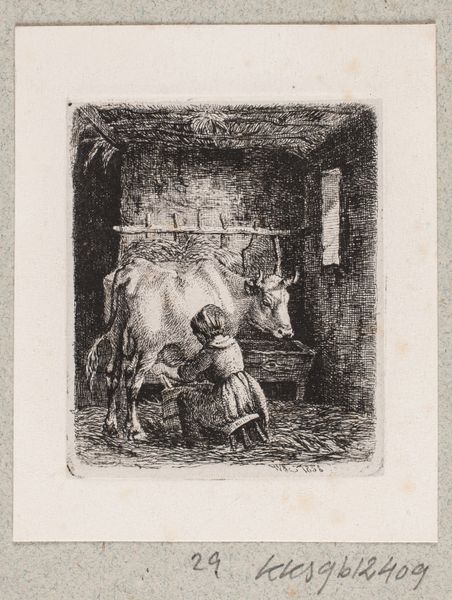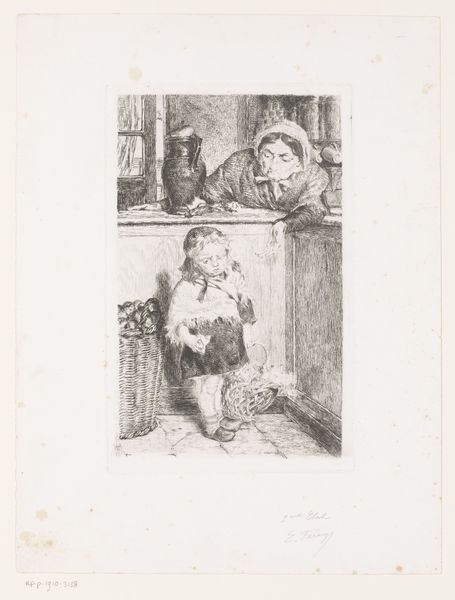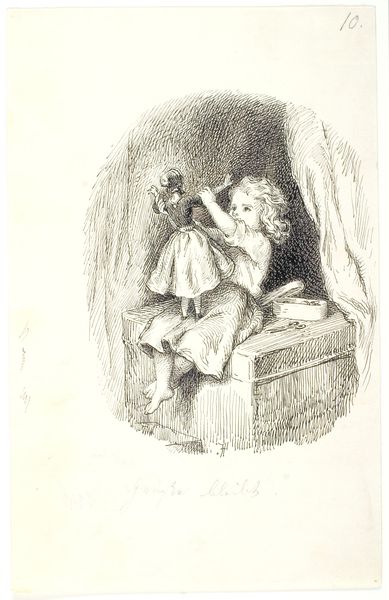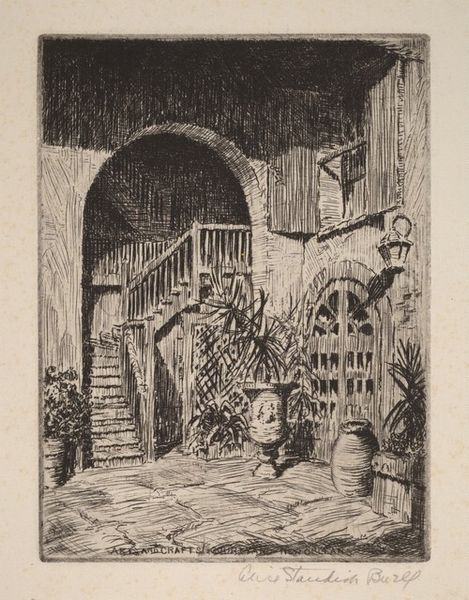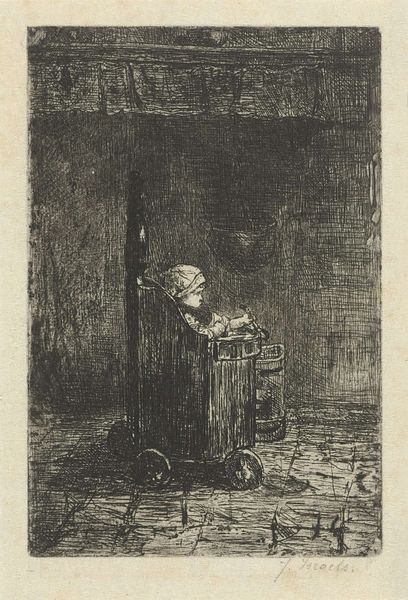
drawing, print, etching
#
portrait
#
drawing
#
narrative-art
# print
#
etching
#
genre-painting
#
realism
Dimensions: height 50 mm, width 33 mm
Copyright: Rijks Museum: Open Domain
Editor: Here we have Charles Jacque's 1844 etching, "Young Beggar Standing Before a Man in a Window." The scratchy lines give it a bleak, impoverished feel. What’s your take on it? Curator: I see here a powerful commentary on the means of production, specifically of human life. The etching as a process itself - the laborious scratching of the plate - mirrors the labor and hardship evident in the beggar’s posture. The man in the window, seemingly idle, highlights class disparity and control over resources. Do you see the ways in which the materiality of the work underscores this narrative? Editor: I guess I hadn't thought about the etching process itself contributing to the meaning, but it makes sense. Is the window framing significant too? Curator: Absolutely. The window serves as a frame *within* a frame, further isolating and objectifying the figures. It begs the question, who has the privilege to observe and consume this image, and whose labor sustains that privilege? Also, note how the artist renders the beggar with meticulous detail, whereas the figure in the window is obscured, more of an idea than a person. Editor: It’s interesting how the materiality connects to social issues. I will look at art differently now. Curator: Precisely! By analyzing the labor inherent in both the subject matter and the artistic process, we gain insight into the societal structures at play. The making of art itself, like any form of production, has inherent social implications.
Comments
No comments
Be the first to comment and join the conversation on the ultimate creative platform.
